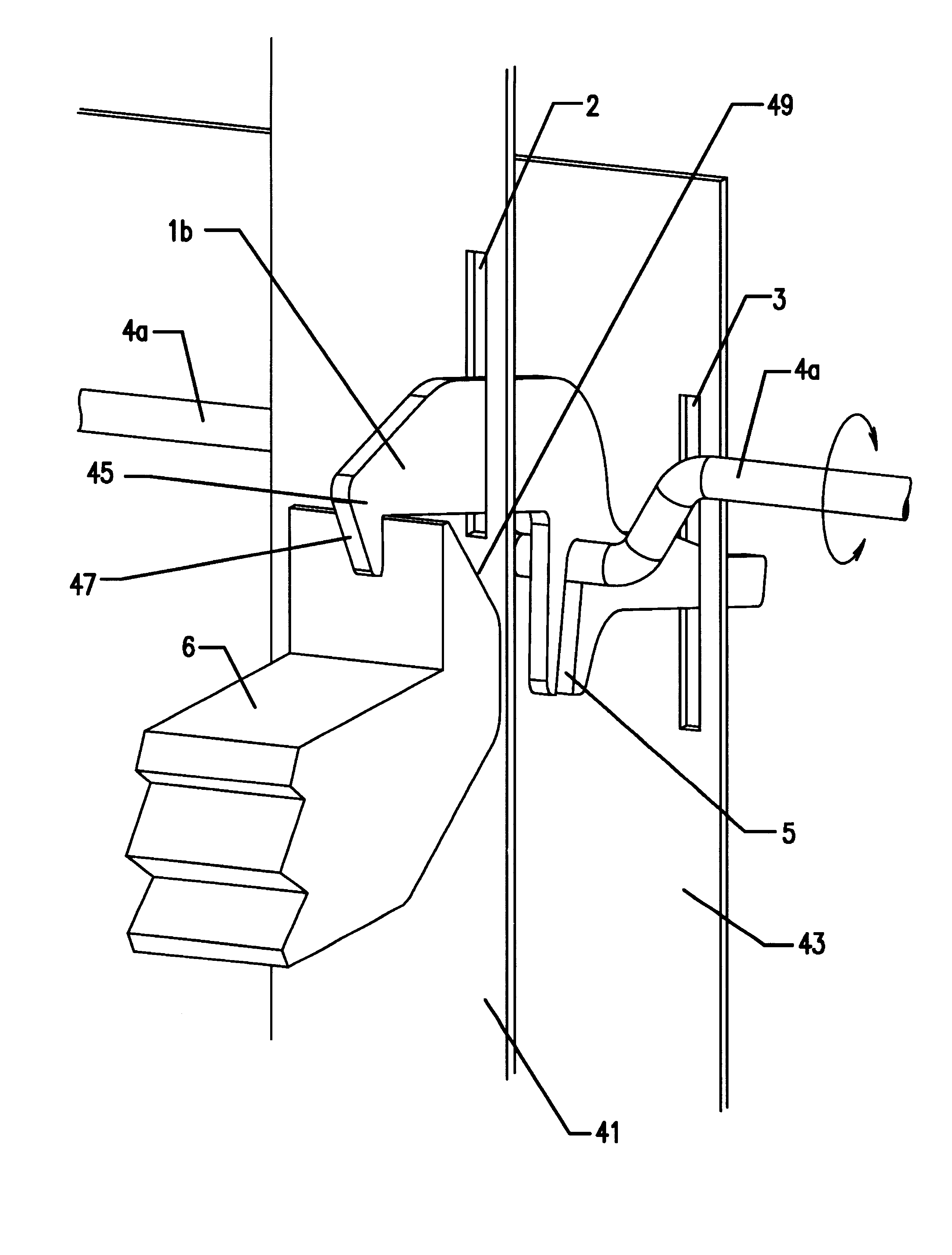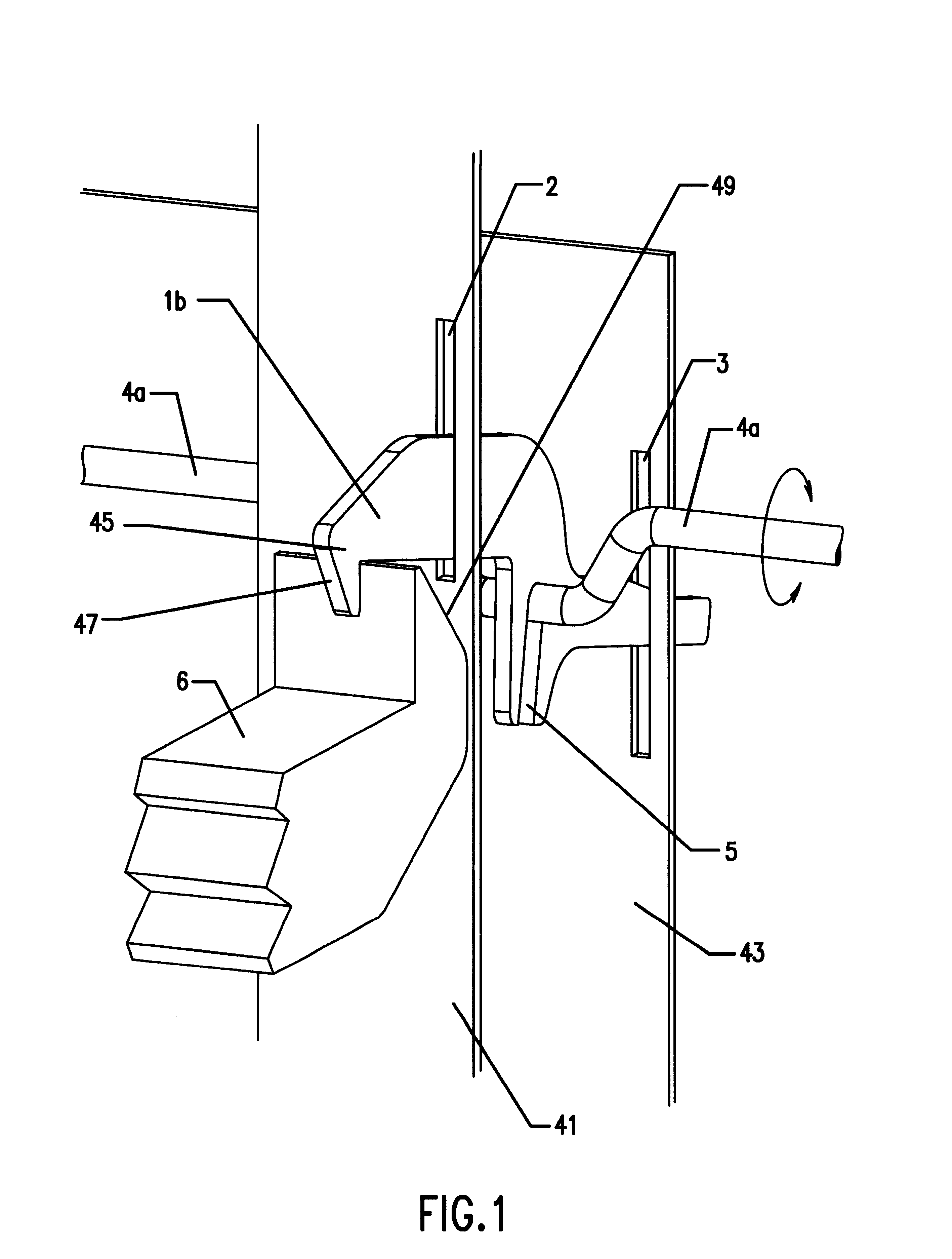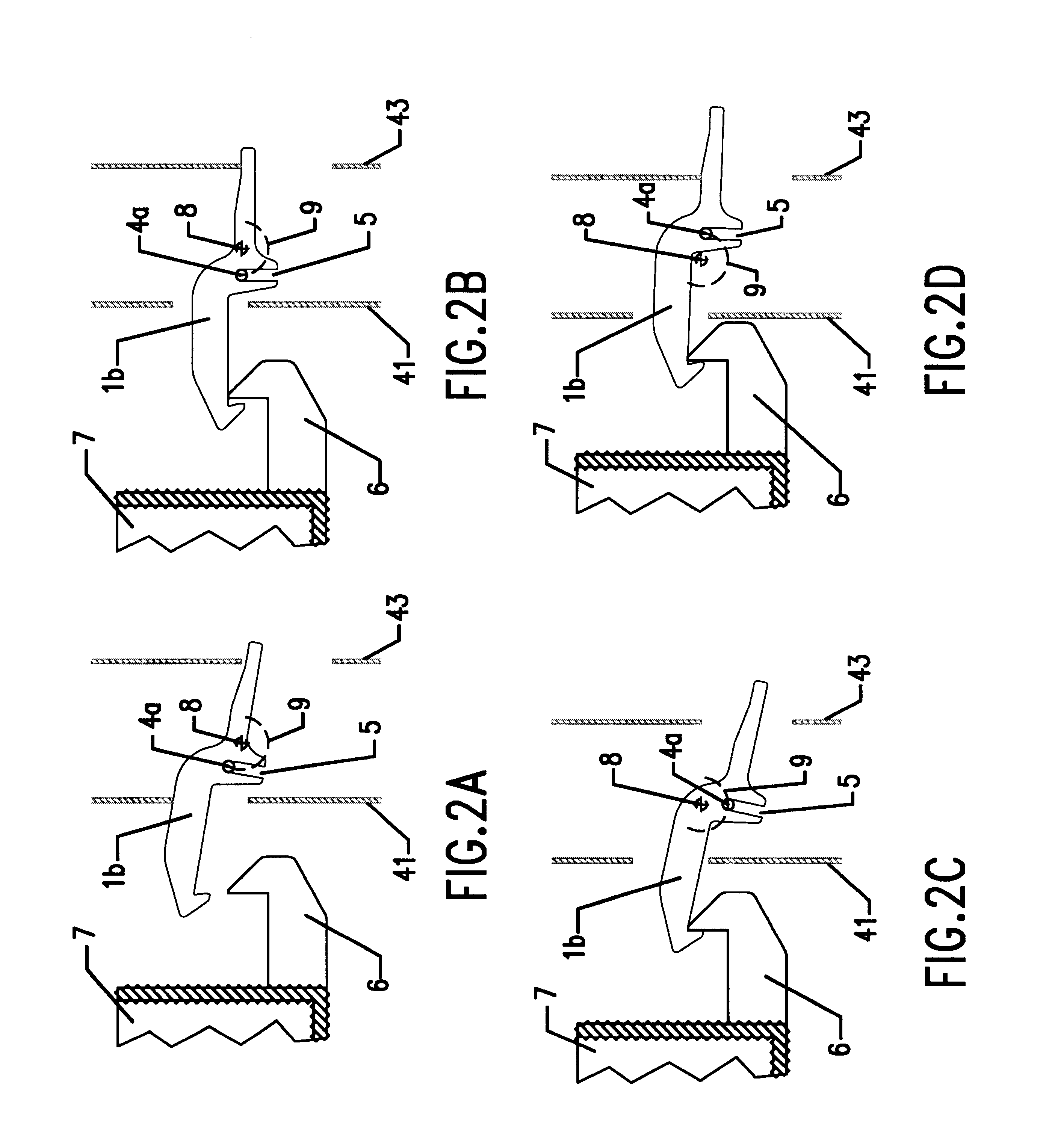Drawer closing and latching system
- Summary
- Abstract
- Description
- Claims
- Application Information
AI Technical Summary
Benefits of technology
Problems solved by technology
Method used
Image
Examples
Embodiment Construction
FIG. 1 provides a partial perspective view of one arrangement of the latch mechanism of the present invention. FIG. 1 shows a latch mechanism for a single drawer.
The latch mechanism includes latch finger 1b, which is constrained to move in openings 2 and 3 formed, respectively, in front plate 41 and rear plate 43. The openings allow the latch finger to move forward and backward freely. The openings have upper and lower ends which define limits for upward and downward movement of the latch finger. In the position shown, the hooked end 45 of the latch finger 1b engages catch 6 which is attached to the rear portion of drawer 7 (not shown in FIG. 1, but visible in FIGS. 2A-2D). Crankshaft 4a imparts motion to the latch finger by engaging slot 5 formed in the latch finger.
As crankshaft 4a rotates clockwise about its axis, from the position shown in FIG. 1, it raises latch finger 1b to the top of opening 2 in plate 41. In this raised position, the hooked end 45 of latch finger 1b is disen...
PUM
 Login to View More
Login to View More Abstract
Description
Claims
Application Information
 Login to View More
Login to View More - R&D
- Intellectual Property
- Life Sciences
- Materials
- Tech Scout
- Unparalleled Data Quality
- Higher Quality Content
- 60% Fewer Hallucinations
Browse by: Latest US Patents, China's latest patents, Technical Efficacy Thesaurus, Application Domain, Technology Topic, Popular Technical Reports.
© 2025 PatSnap. All rights reserved.Legal|Privacy policy|Modern Slavery Act Transparency Statement|Sitemap|About US| Contact US: help@patsnap.com



